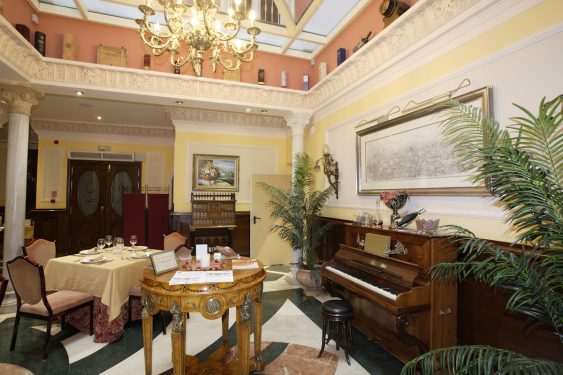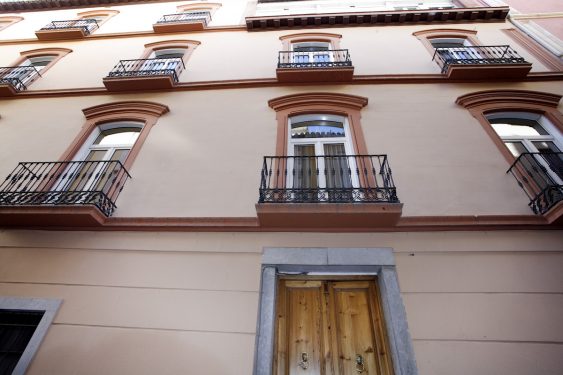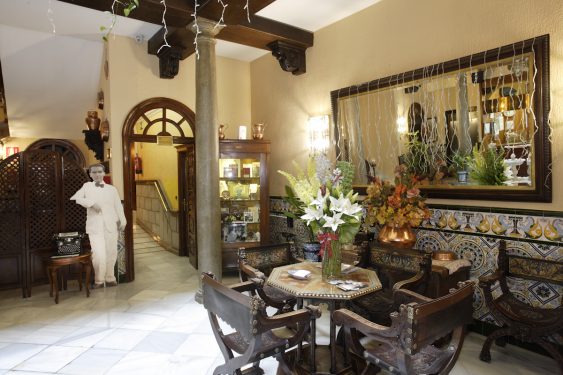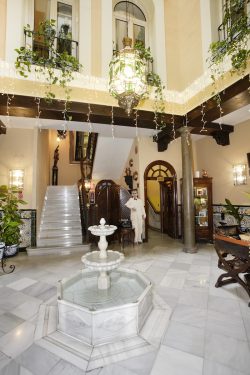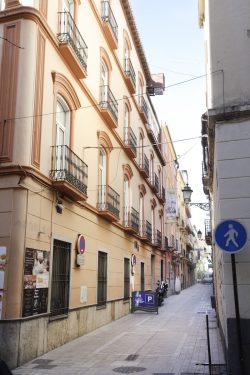Luis Rosales’ house where Lorca lived as a refugee for seven days until his arrest in August 1936. The current hotel retains original vestiges.
The house of the Rosales Vallecillos family was the place where Federico García Lorca took refuge on August 9 after the violent and successive searches perpetrated in the Huerta de San Vicente (San Vicente Farmhouse) in the days following the uprising of July 18.
The poet believed that the Rosales brothers’ links – including Luis, the poet- with the Falange guaranteed his immunity. Lorca remained in the house until the early afternoon of August 16 when he was arrested and taken to the Gobierno Civil by a squad commanded by the former member of of the CEDA party Ramón Ruiz Alonso who was accompanied by several individuals, including Juan Luis Trescastro, and the chauffeur.
Lorca spent a week of tremendous uncertainty in a room on the second floor. His main pastime consisted of playing the piano and reading.
The poet lived those seven days on the second floor of the mansion occupied by Luisa Rosales Camacho, sister of the Rosales’ mother, in a spare bedroom on the second floor from which he went down to eat or read. During the bombings Lorca joined the improvised shelter where the whole family went.
The house, located at 1 Angulo Street, was transformed into a hotel. The room where Lorca lived does not exist and the house itself was extensively renovated. The dining room retains one of the few original vestiges, the door through which Ruiz Alonso entered in search of the poet. Both the columns of the courtyard and the large stairs were demolished.
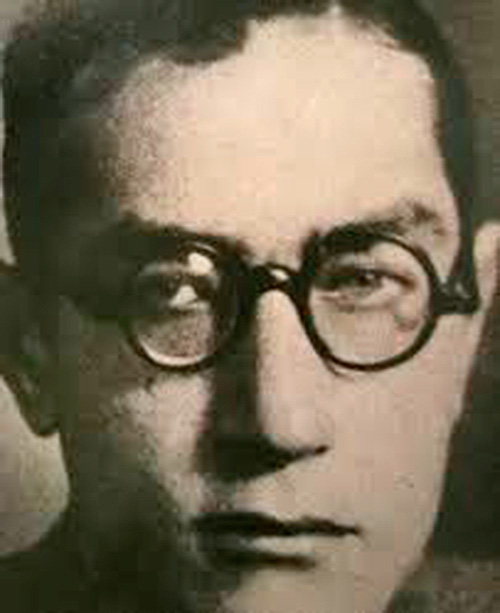
The poet arrived on the night of August 9 in the cab that the Lorcas used to rent for their transfers. Lorca had no special relationship with the family except with Luis, the poet. In addition to the first floor, the property had two upper floors. In the first one lived the Rosales Camacho family; the second one, which was almost independent, was occupied by the aforementioned aunt Luisa, sister of Doña Esperanza, the mother. The poet lived in an adjoining bedroom during that week of tremendous uncertainty. His main pastime consisted of playing the piano and reading.
The arrest of Lorca was a major operation. The house was surrounded by armed men ready to intervene in case of escape. According to Ian Gibson’s version, on the afternoon of the arrest only the aunt and mother of the Rosales and a sister were at home. Due to the resistance of the Rosales’ mother to hand over Federico, Ruiz Alonso went to the Falange headquarters in search of one of her sons, Miguel Rosales, who returned home. Ruiz Alonso accused Lorca of being a Russian spy and of having done more damage “with the pen than others with guns”.
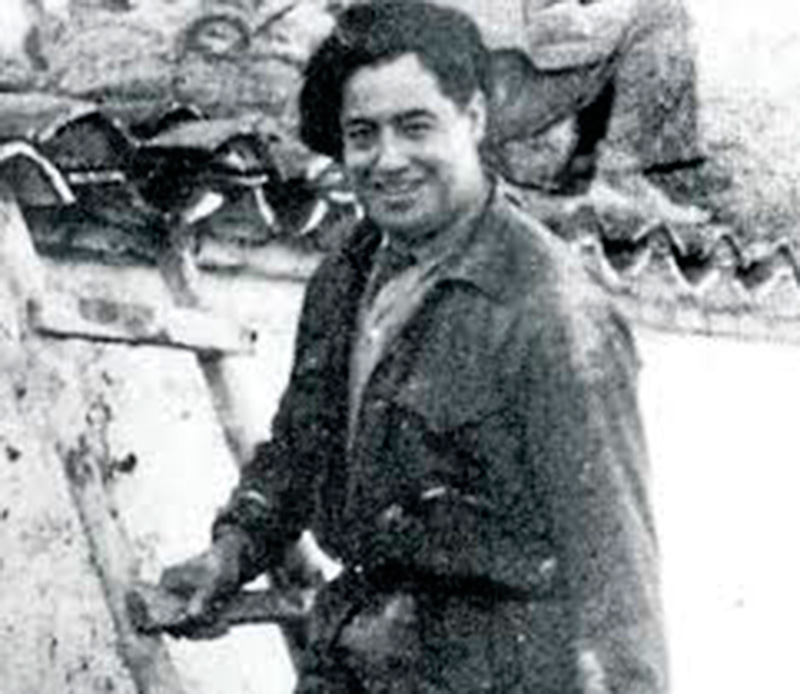
On the other hand, the version of the journalist Eduardo Molina Fajardo insists that Ruiz Alonso, before presenting himself for the first time in the house, went in search of Miguel Rosales who was in a barracks in San Jeronimo street instructing some volunteers on weapons and who agreed to accompany him in the arrest.
The arrest took place without resistance. Lorca went out walking, dressed in his pajama jacket and a dark suit and got into the car.
The architect Francisco Prieto Moreno, who had met Lorca at the Casa de los Tiros along with Antonio Gallego Burín and Emilio García Gómez, learned of Lorca’s arrest, as he tells Eduardo Molina Fajardo, from Manuel de Falla. “Despite the fact that [Falla] did not go out on the street then because he was ill, he went to see me at the barracks of the Españoles Patriotas [paramilitary militias that acted alongside organizations such as Requetés and Falange], in the Triunfo bullring. He told me: “They have arrested Federico, what can we do”. I answered him astonished, thinking what I could do… (…) I went home. I was newly married and I went to my in-laws’ house for lunch, in Gran Vía. I told my father-in-law about it, so he tried to find out what was going on, and in the evening, at dinner time, he told me: ‘Federico was shot last night. It was a terrible mistake!
The room that Federico occupied had “two beautiful golden beds, with hoops, tassels and a bedside table on which a lithograph of Santo Domingo” was hanging, although he spent most of his time in Luisa Camacho’s living-room which, in addition to a piano, had a balcony overlooking Angulo Street. According to family testimonies, collected by Molina Fajardo, the poet ate on the first floor and also liked to spend several hours reading. In case of a bombing, everyone would hide in a corner that Lorca baptized as El Bombario. In the afternoon he used to go down in his pajamas or in pants and shirtsleeves to Luis’ library on the first floor.
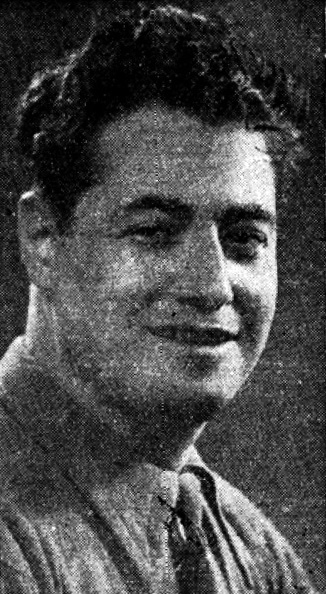
Ruiz Alonso was a friend of Horacio Roldán Quesada, the relative of Don Federico with whom he had problems because of some land in Valderrubio and who participated in the search on August 9 for the siblings of the landlord Gabriel Perea in the Huerta de San Vicente.
The car in which the Falangists arrived to arrest Lorca was an Oakland with license plate GR-2185. According to Eduardo Molina Fajardo, one of the unknown companions of Ruiz Alonso was called Federico Martin Lagos, head of the Falange century. Miguel Rosales claims that when they arrived at the house “it was surrounded by assault and militia guards”. Ruiz Alonso was dressed in overalls (they nicknamed him “the trained worker”) with a Falange insignia sewn on. “Federico was in the courtyard in his pajamas. My mother gave a large glass of coffee with milk to Ruiz Alonso and me. Trescastro and the others stayed at the door without entering.” The former CEDA party MP and linotypist of the newspaper Ideal told Lorca: “You have to accompany me to the Gobierno Civil, but only for you to make some statements”. According to Miguel Rosales, the poet turned white: “He was like a doll and all the women in the house began to cry. García Lorca went upstairs to dress in his bedroom, and the rest of us waited in the courtyard”. Then he said goodbye to the family and Miguel Rosales escorted him to the car”, adds Rosales in the account he gave to Molina Fajardo.
When Lorca was arrested, the Rosales’ mother told the poet’s family that had gathered at the house on San Antón street where the socialist mayor, Manuel Fernández-Montesinos, resided, that on that same day he would be shot at the cemetery walls. Desperate due to the arrest of Federico, Miguel Rosales, accompanied by Lorca’s father hired the lawyer Manuel Pérez Serrabona to save the poet. The gesture was futile: Spain was a lawless country, broken by war and in many cases in the hands of gunmen who applied justice themselves.
Cuando se hundieron las formas puras
[When the pure forms sank]
bajo el cri cri de las margaritas,
[in the cri-cri of daisies,]
comprendí que me habían asesinado.
[I knew they had assassinated me.]
Recorrieron los cafés y los cementerios y las iglesias,
[They combed the cafes, cemeteries and churches,]
abrieron los toneles y los armarios,
[they opened the wine-casks and cupboards,]
destrozaron tres esqueletos para arrancar sus dientes de oro.
[destroyed three skeletons to take their gold teeth.]
Ya no me encontraron.
[But they couldn’t find me.]
¿No me encontraron?
[They didn’t find me?]
No. No me encontraron.
[No. They didn’t find me.]
Pero se supo que la sexta luna huyó torrente arriba,
[But it was known the sixth moon fled above the torrent,]
y que el mar recordó ¡de pronto!
[and the sea— suddenly!— remembered]
los nombres de todos sus ahogados.
[the names of all it had drowned.]
- Miguel Caballero and Pilar Góngora. The Truth about the Murder of García Lorca. Ibersaf, Madrid, 2007.
- Ian Gibson. Federico García Lorca. Biography. Grijalbo. Barcelona. 1987
- Eduardo Molina Fajardo. The Last Days of García Lorca. Plaza y Janés. Barcelona, 1983.
- Agustín Penón. Fear, Forgetfulness and Fantasy. Comares, Granada, 2009
- Gabriel Pozo. Lorca, the Last Walk. Ultramarina. Granada, 2009.
- Lorca´s location
- The Rosales’ House
- current location
- Hotel Reina Cristina
- ADDRESS
- Tablas, 4
- Web
- https://www.hotelreinacristina.com/en/
- Telephone
- 958 253 211
- clientes@hotelreinacristina.com
- DETAILS OF THE VISIT
The hotel is open all year round and offers visits to Lorca-related facilities.
